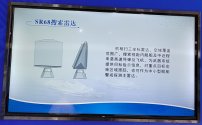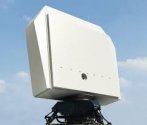Regarding dual-face rotating AESA radar, wondering whether it would rotate continuously all the time or just when it is needed like during intense patrol or near conflict area ?
why not just bigger single-face rotating AESA radar, perhaps a bit higher RPM
It would not rotate continuously all the time. Only when it is used in exercises, in troubled areas, or in wartime. It will be used sparingly to save on wear but used enough in exercise or practice to help train crews and preserve skills.
Your wartime radar to be continuously on is only going to invite your radar signature to be detected and studied by foreign threats. You are also going to give away your position. Triangulation and directional finding of your wartime radar can be used to invite an air or missile strike against you.
In peace time, only your navigation radars should be used. Navigation radars are set to X-band for high resolution but that also means your attenuation is high and the radar range is limited, so its not likely to be detected at some point. Many modern X-band navigation radars should already be upgraded to solid state, like using Gallium Arsenide or Gallium Nitride for your transmitter, instead of classic travelling wave tubes or TwT, magnetrons, or Klystrons. Solid state navigation radars should allow for the use of LPI, or low probability of Intercept, even on your shorter range X-band emissions, just to leave no stone attached. I am likely to think that most of the PLAN's warships, including 054A, have already been silently upgraded with this at some point.
You probably should be spending most of your time using your ESM to passively read the spectral environment, detect and directionally locate and record potential threat emissions, and this is why I think ESM is more and more primarily important to a ship for its situational awareness. For this, we have seen 052C, 052D, 054, 054A, and even 056A get retrofits and upgrades on this. While on patrol or shadowing other navies, they are keeping their ears open and trying to read and record their signals. And of course, the other side will try to do this to you, which is why you keep your own radars silent.
Another way around this is to have several modes on the radar, so you only use this mode for peaceful, public use, and keep your real wartime mode, with its frequencies, waveforms and its true performance, hidden and secret.
With regards to a bigger single faced rotating radar, the bigger they are and the faster they rotate, the more centrifugal and gyroscopic forces they generate. That creates all sorts of mechanical, stress, and not the least, harmonic problems, as its like a giant lop sided top spinning on top of a tower. This also makes the ship top heavy and wondrously exciting handling problems in rough seas. At the same time, the mast tower has to be strengthened, which means more weight, and this makes the ship even more top heavy. This is why the bigger radars have to be mounted at the superstructure and at fixed quadrants.
Big radars have limited turn rate for the reasons mentioned. Dual facing them increases the tracking rate by 2x but in order to keep the same weight, you have to correspondingly reduce the size of each array, which in turn reduces the performance therein. The dual siding also features its own weight balance, with each side counter balancing each other, countering the harmonics, so this lets you spin even faster.
But to increase your track rate, why not just add a small secondary radar instead, that spins at a much higher rate. Let's say if you have this large air search radar, and it spins at 12 x a minute. So in a minute, you only ticked on the target only 12 times. This isn't very good if the target is moving at high speed or violently maneuvering as this means each tick is already outdated by lag. A dual side would reduce the range but at least you are ticking the target at 24 times a minute. But what if you add a small secondary radar that turns around 60 times a minute or once every second. Sure the range isn't great but you are now ticking the target at 60 times a minute or once every second in real time. There is still some lag but you can now queue your fire control radars towards the general area to detect and continuously track the target in real time on their own.
This explains the PLAN's Type 381 search radar, used on the 051B original and some Ludas (165, 166), which is single sided and, then moving on to the double sided Fregat and Type 382, and then adding the Type 364 secondary radar on all its ships.
But we have seen the Type 364 radar replaced with a new dual sided AESA on the Type 075. I believe this to be the replacement Type 364 for incoming ship designs. If the new radar rotates at the same rate at the old one at 60 rpm, with it being dual faced, the tick rate is now 128 times a minute.
Where the two radars overlap in range, the tracks from the two radars can even be combined by computers so the total track rate is now the combination of the main search radar and the secondary radar. You now have a more accurate result in real time and more dots to make a more accurate track prediction.
With the pieces now in place, this is why I think the 054B will have a main dual sided search radar, followed by a second and smaller dual sided secondary radar. Some of the fan art is already depicting this and even the design on the coin.
In addition, the smaller radar runs at a higher frequency, likely a C or X band, versus the main search radar at S band. C or X band is more discriminate and less likely to have clutter than S-band, so that can be used to clean out clutter, especially if the target is flying at very low altitudes, where your radar's reflections against the sea waves can reflect back the clutter.



